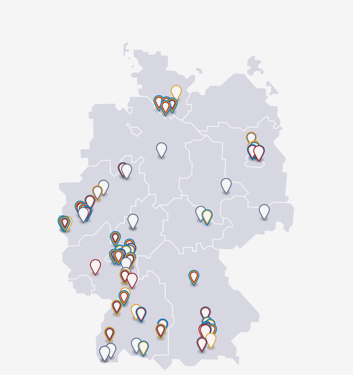Implementation of the EU HTA Regulation - Much remains to be done!
The EU HTA Regulation came into force on 11 January 2022. It regulates the joint clinical assessment of new medicinal products at the European level (EU HTA). The assessment of advanced therapy medicinal products (ATMPs) and oncological medicinal products will begin in January 2025. Assessments of orphan drugs are to follow from 2028 and for all other medicines from 2030.
The regulation pursues the following objectives:
- Improve access to innovative therapies for patients in the EU
- Reducing bureaucracy and avoiding duplication of work for all parties involved through Joint Scientific Consultations (JSC) and subsequent Joint Clinical Assessments (JCA)
- Strengthening the quality of clinical assessments
- Strengthening Europe as a pharmaceutical location and its international competitiveness
To this end, the right course must be set in good time at European level and in the German system of benefit assessment (AMNOG process) to ensure the best possible preparation in the national agencies and companies. Because 2025 is fast approaching. The pharmaceutical industry has clear expectations of the implementation of the EU HTA Regulation in terms of a predictable, practicable and efficient process with reduced bureaucracy. We therefore want to work together with the national HTA institutions and authorities to ensure successful implementation.
The following points must be considered at European level:
Better involvement of health technology developers
Manufacturers must be recognized as indispensable key players and as such must be involved appropriately and constructively in the entire EU HTA process, particularly in determining the scope of the assessment. This will significantly improve quality.
Aim for common European evidence requirements
EU HTA as a mere amalgamation of national practices cannot reduce the bureaucratic burden for companies and HTA authorities. Therefore, an alignment of common evidence requirements should be sought. The development of an EU PICO focusing on what is common to the Member States is crucial.
Ensure lean processes and adapt to timeframes
Greater consideration must be given to the feasibility of requirements to be able to complete dossier preparations and HTA assessments within the tight timeframe parallel to the authorization process. The EU HTA process must be efficient and practicable for both manufacturers and assessors within limited timeframes.
Create context-specific assessment methods
Assessment methods must be adapted more closely to the clinical and regulatory context and applied flexibly. Orphan drugs and ATMPs require adapted methods (as provided for in Recital 24 of the EU HTA Regulation) that can fulfil the therapeutic area (including the use of surrogate endpoints, indirect treatment comparisons and real-world evidence).
Ensure capacity for scientific advice
Sufficient capacity and expertise must be available at EU level for timely and high quality joint scientific advice.
The following points are required as part of implementation at national level:
Ensure comprehensive use of the European assessment
To avoid duplication of work, the results of the European assessment must be utilised comprehensively in the German AMNOG process. Consequently, the use and adoption of the joint European assessments in the national process must become mandatory for the G-BA.
Reduce requirements for complementary analyses
The requirements in the national dossier submission templates in the AMNOG process, in particular for subgroup and certain drug safety analyses, need to be reviewed to ensure that they are shaped substantially more efficient. European guidelines should be used as a guide here to achieve the EU HTA assessment without loss of quality.
Strengthen G-BA consultations on complementary analyses
To optimise the interaction between the AMNOG procedure and the EU HTA, the national G-BA consultations must be strengthened. This applies in particular to additional consultations on national complementary clinical analyses in addition to the EU HTA. These should be limited to a few and absolutely necessary analyses.
Ensuring rapid market access
One challenge for the rapid start of the AMNOG process is the late availability of the European HTA assessment report several weeks after drug approval. The AMNOG regulation must be safeguarded regarding the possibility of rapid market access once authorisation has been granted so that innovations are still available as quickly as possible in the future.
Tailored integration of the orphan drug regulation
The orphan drug regulation in the AMNOG should be strengthened by stating that the additional benefit for orphan drugs is also considered proven in the context of the EU HTA and that evidence compared to a comparator therapy must be provided only in the national process once the turnover threshold of EUR 30 million has been exceeded. This continues to ensure rapid access to new orphan drugs in Germany.
All parties involved are working intensively on the implementation of the EU HTA Regulation. There are still many unanswered questions regarding the development of the procedures. The pharmaceutical industry is committed to using its expertise and resources to ensure that the EU HTA process will be a success. The national HTA institutions should resolve the outstanding issues as soon as possible. Changes to the operating models and processes of national HTA institutions should be implemented as soon as possible. All stakeholders should have a clear and predictable framework for the planning and implementation of the EU HTA and the subsequent AMNOG process.
We therefore call for a continuous dialogue with the national authorities during the implementation process.
This text is a joint statement by the B.A.H., BPI and vfa, which you can .



